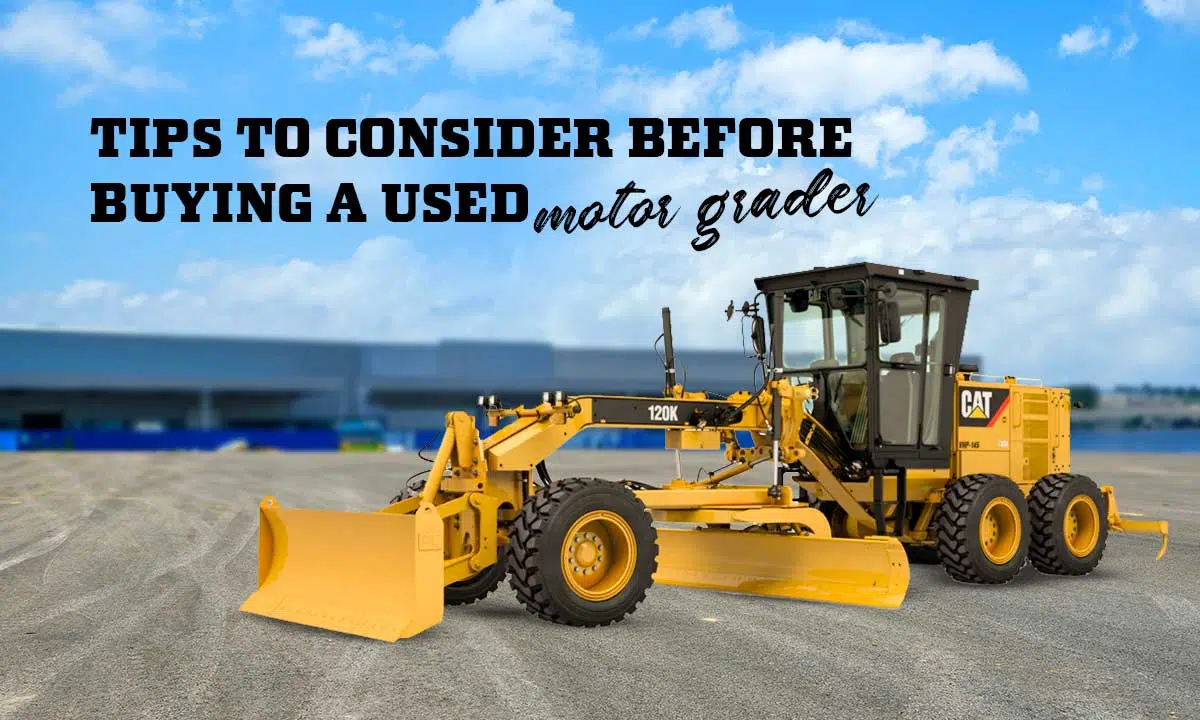
Before finalizing your purchase of a used motor grader, it’s important to consider a few key factors. To simplify the process, we have compiled seven helpful tips to ensure you make the right decision when buying a used motor grader.
If you wish to upgrade your construction equipment fleet, consider exploring the options available for used motor graders for sale.
Consider these seven essential tips while buying a used motor grader
Following these seven tips will help you select a used motor grader that aligns with your needs, leading to efficient and successful project outcomes.
1. Understand Your Operational Needs
Before initiating any inquiries, it’s essential to have a clear understanding of your specific requirements. Used motor graders come with varying price tags, typically ranging from $20,000 to $400,000, depending on factors like age and usage. Therefore, ensuring that your investment aligns with your needs is crucial.
Different graders are designed for various grading tasks, such as creating smoother surfaces or preparing top layers for road construction. Determine whether the grader will be used for construction, forestry, or mining applications to make an informed choice.
2. Select the Appropriate Motor Grader Brand
Once you have identified your operational needs, it’s wise to compare different brands. Like any product or machine, each brand has its advantages and disadvantages. Choosing the right manufacturer can significantly impact your operations.
You can explore our article on the top motor grader brands to understand the benefits of each OEM. However, there are also other brands available that may offer competitive prices.
3. Check the Circle
The circle is a crucial component of a motor grader, as it enables the operator to adjust the angle and tilt of the moldboard. Without a well-maintained and properly functioning circle, performing precise grading tasks becomes challenging. Inspect the circle’s surface for uneven wear, which can indicate misalignment. To prevent uneven wear and vertical play, shims are used in a correctly aligned circle. If shimming has been done, start the motor grader and thoroughly test the circle’s range of motion for any signs of play.
4. Moldboard
Ensure the cutting edge of the moldboard, attached to the bottom and sides, is straight and free of wear. Usage and terrain determine the frequency of replacing cutting edges. If it’s worn down to half an inch or less, replace the cutting edge and bolts to avoid the moldboard performing the cutting edge’s work. It’s more cost-effective to replace the cutting edge than the entire moldboard.
5. Articulation Point and Linkage System
The location of the articulation point varies depending on the motor grader manufacturer, such as being in front of the cab (e.g., John Deere) or directly behind it (e.g., Champion). Examine the articulation point for signs of wear, which will be influenced by the operating environment. Rough terrain can cause more strain on the articulation point than smoother soil.
Examine the linkage system and look for wear or damage in the frame and front axle caused by strain. Inspect steering components for proper alignment if the damage is present.
6. Engine Power
If you’re considering buying a pre-owned motor grader, you likely have specific requirements in mind, including the desired engine power. Nowadays, most graders come equipped with engines ranging from 100 to 200 horsepower. Ensure that the grader you’re evaluating has sufficient power to handle the job effectively, according to the scale of your project.
7. Hydraulics, cylinders, lines, and hoses
Begin your examination of the hydraulics by directing your attention to the ground beneath the machine rather than focusing on the components themselves. Any fluid leaks are likely to leave visible traces in this area. After inspecting the surrounding and undercarriage of the motor grader, carefully examine all cylinders, lines, and hoses in areas such as the engine compartment and circle drive housing. Take note of any indications of leaks or damages that will necessitate repairs.
To summarize, it is important to carefully consider various factors before buying a used motor grader. By understanding your operational requirements, choosing the appropriate brand, inspecting key components like the circle, moldboard, articulation point, and linkage system, evaluating engine power, and examining the hydraulics, you can make a knowledgeable decision.
If you’re searching for a reliable piece of heavy equipment, consider exploring the options available for used motor graders for sale, which can offer both quality and affordability for your construction needs.


Post a Comment